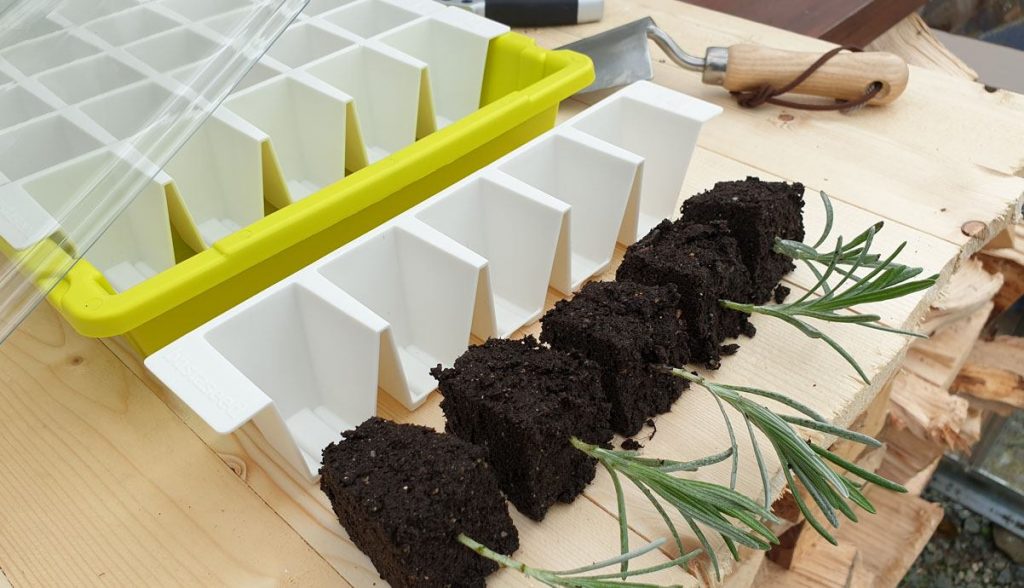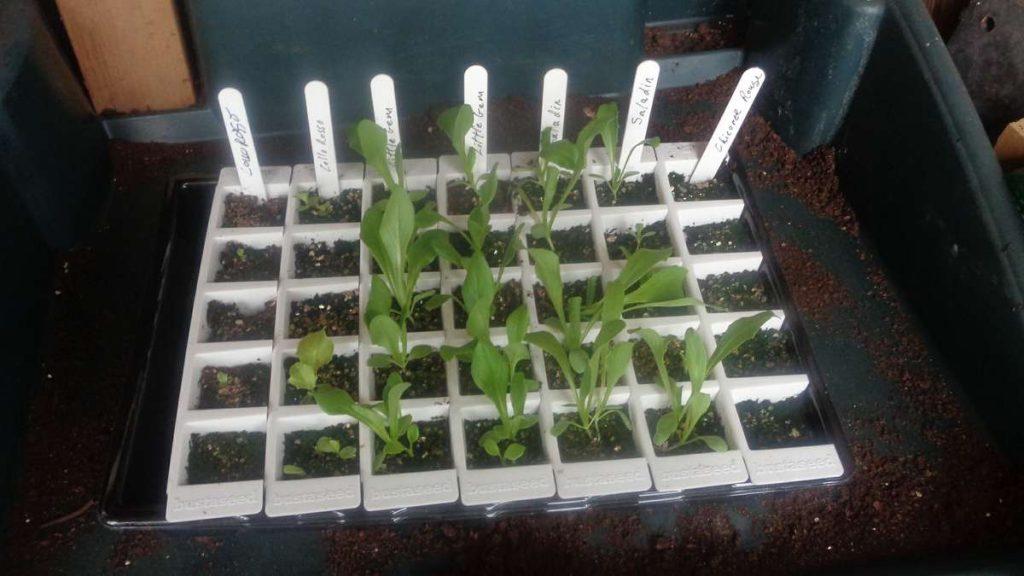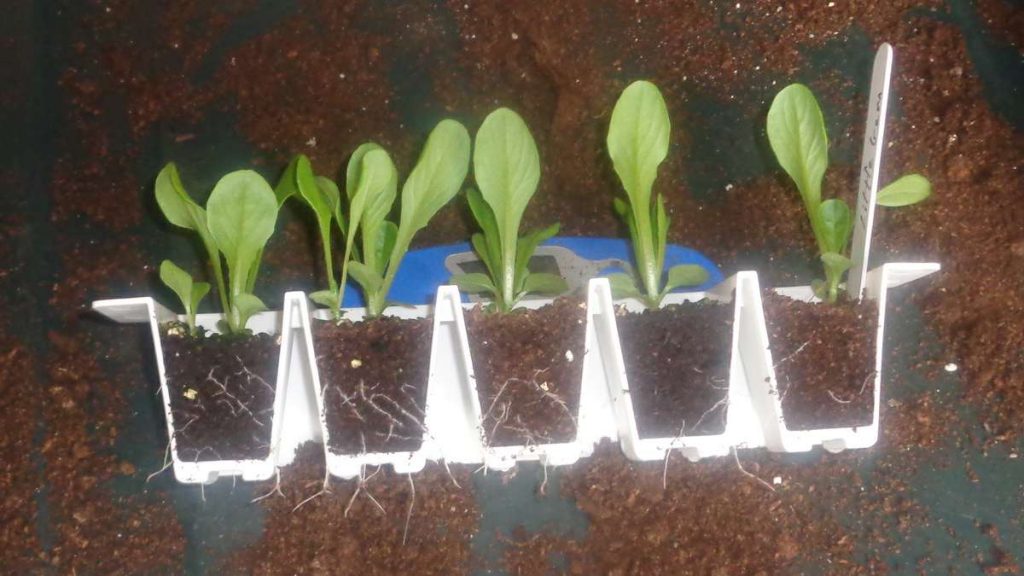I was contacted by Niall Magee of Bustaseed a while back. He asked if I’d like to try their new modular propagation system. I thought they looked really interesting so, of course, I said yes.

Bustaseed Modular Seed Tray System
Growing in Modules
Often I’ll start seeds in a half seed tray and then prick out into modules to grow on. Sometimes I’ll sow directly in the modules, thinning to the best seedling near the centre to grow on. Some crops, like tomatoes and peppers, go directly into 10 cm pots from pricking out. Modules are ideal for crops that are going to go into the ground fairly quickly. Lettuce is a good example of this – they’re brilliant for leeks as well!
Starting this way gives the grower great control of early conditions. Germination temperatures, available water and no pest pressure means the best possible start. No thinning out in the ground and you can just select the best plants to grow on.
It also makes good use of the land. Maybe you have a bed that has something in you’re wanting to clear before you plant out. Starting in a module will mean the land isn’t needed for a few weeks and you can get two or even three crops in a season. Done correctly the roots are little disturbed on planting out and the module grown plant will just expand out into the surrounding soil.
Problems with Modules
The problem with modules is you’re never quite sure how the roots are doing until you come to plant out. With experience you get a good feel for when a particular plant is ready to move on but it’s more guess than knowledge.
The big problem though is when you need to get the plant out of the module. You end up with the sheet of modules nearly upside down, pushing at the bottom to force a plant out. Most often the bottom of the module gets damaged or plants fall out you didn’t want to fall out and the plant gets damaged when it drops out.
Because most seed tray modules need to be distorted to press out the contents, they’re made of thin, flimsy plastic and often don’t survive more than a few seasons.
Bustaseed® Tip Out Propagation Tray
Bustaseed seeks to address all those problems whilst keeping the benefits of modular propagation.
For a start, the Bustaseed trays and modules are constructed of good quality, thick plastic and will last many years. Plastic is a useful material but we’ve created huge environmental problems with single use and short-life plastics. Since this review was originally written, the supporting seed tray has been improved and is now even more robust and yellow which is better to recycle at end of life.
The modules come in strips that are open fronted. This means they can be lifted out and checked to see how the roots are doing. The open fronts are closed by the back of the module in front.
An extra benefit of the modules being in strips is you can grow one variety in a strip and another in the next strip. There are 7 strips of 5 modules per Often you don’t want a whole tray of the same plant. For example, I’m growing three different lettuce varieties in one tray.
Where the Bustaseed system really scores is transplanting. Take the strip, tip it over onto the bench or bed and you’ve five plug plants ready to go in. No fuss, no bother and no damage. I’m really impressed! It’s a big timesaver over conventional modules.
The trays come with a transparent propagation lid to assist with seed germination. This is robust and should last as long as the trays and modules.





